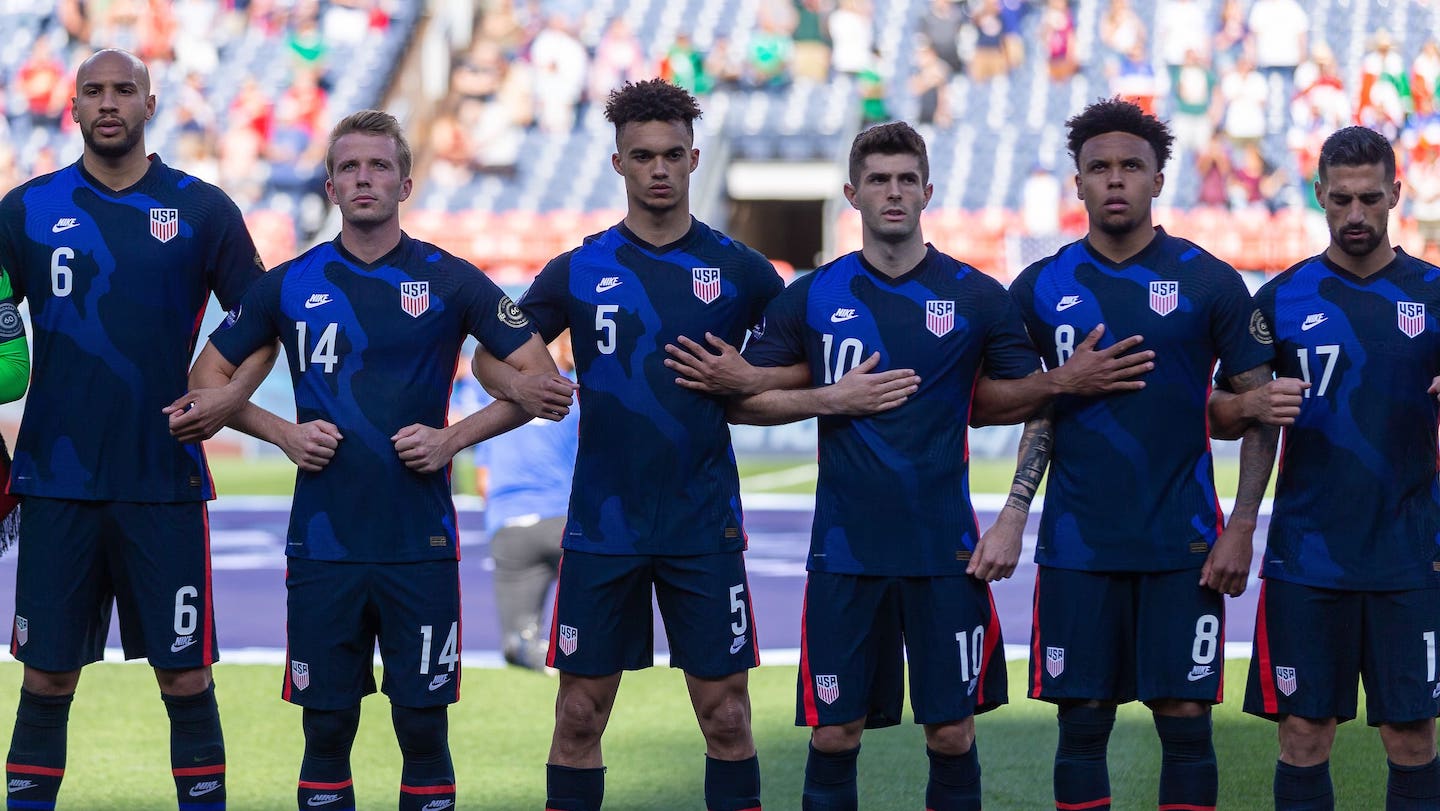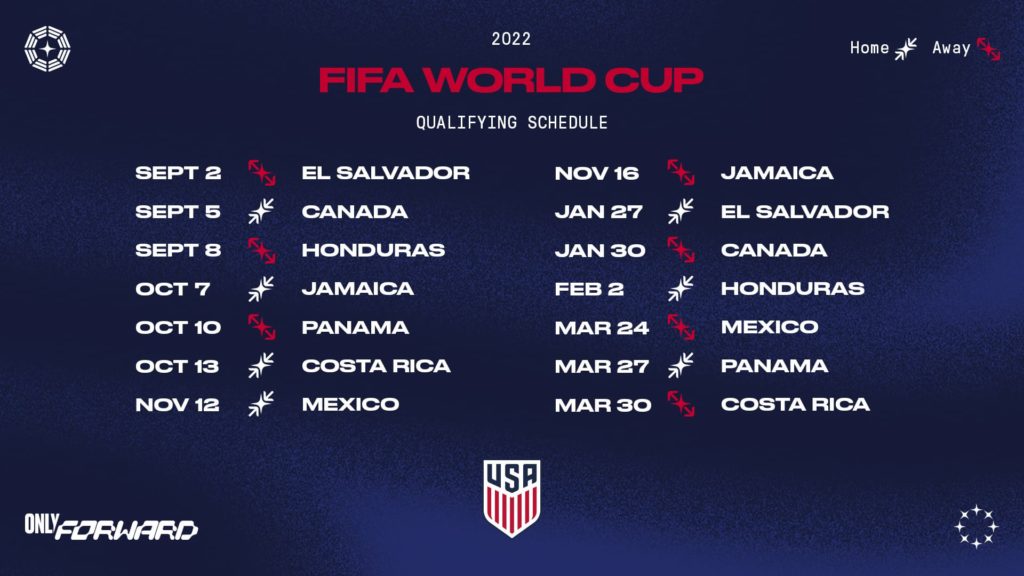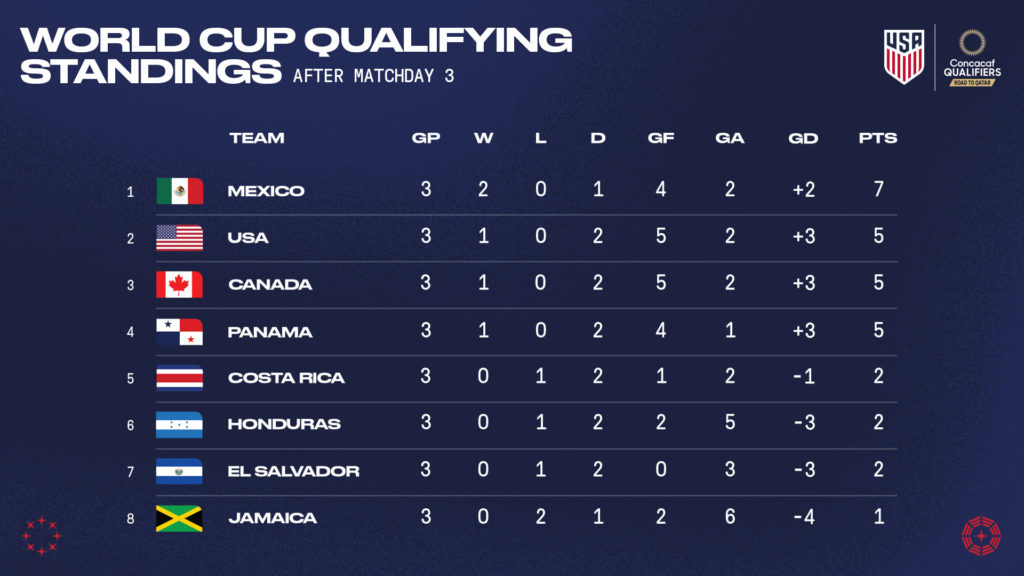Breaking down the USMNT’s 2022 FIFA World Cup qualifying journey

After a wait of nearly four years, the USMNT has embarked on the arduous journey of becoming one of the 32 teams earning the right to compete in the 2022 FIFA World Cup.
Here are Five Things to Know about the process the USA and the rest of Concacaf final round participants will undertake in order to advance to Qatar ’22:
THE GLOBAL FRAMEWORK
Concacaf is one of six regional confederations which sends participants to the World Cup. FIFA determines how many spots each confederation gets in the 32-team tournament, and from there each organizes its own qualifying competition. The only team which gains automatic entry is the host, in this case Qatar.
Since the 2006 edition of the tournament, Concacaf receives 3.5 spots – the top three finishers receive automatic berths, while the fourth-place team competes in an Intercontinental Playoff against an opponent from either the AFC (Asia), CONMEBOL (South America) or Oceania (South Pacific) which will take place in June of 2022.
THE CONCACAF FORMAT
Concacaf has 35 FIFA-affiliated member associations eligible to participate in the World Cup. Under a format revamped in part due to the global pandemic, there are a total of three rounds of competition. At the start, the top five highest ranked Concacaf teams received an automatic place in the Final Round – Mexico, USA, Costa Rica, Honduras and Jamaica.
In Round 1, teams ranked 6-35 were drawn into six groups of five and played a single round-robin matches (two home and two away), with group winners qualifying for the second round.
In Round 2, the six first round group winners played in a two-legged home-and-away series. The three winners – Canada, El Salvador and Panama emerged to join the other five teams in the final round.
With a total of eight teams – otherwise known as The Octagonal – the Final Round consists of 14 matches (seven home and seven away). Previously, only six teams made the Final Round, which means there are two additional participants competing for the same number of spots.
THE QUALIFYING JOURNEY
Again due to the global pandemic, a process that was meant to begin in September 2020 was forced to kick off one year later in September 2021. As a result, teams are now in the midst of a grueling schedule that features 14 matches in a seven-month span (September 2021 to March 2022).
In a normal qualifying campaign, two matches would be played in a 10-day window, typically in a Friday-Tuesday cadence. This time around, due to the condensed format there will four ‘triple dates’ in which three matches will be played in a seven-day span, following a Thursday-Sunday-Wednesday cadence. The only exception is the November window, during which only two matches will be played.
With wins worth three points and draws worth one, the general rule of thumb for successful qualification out of Concacaf is to win at home and draw on the road. If a team were to win all seven of its home matches, it would be right on the doorstep of World Cup qualification and depending on other results, could even end up in the World Cup without picking up any points on the road.
That said, away results are important and where the difference can be made up. While a draw on the road yields one point for both teams, it also means the road team has taken two valuable points away from the hosts. While not as common, road wins are incredibly valuable in the qualification process as the away team picks up all three points and serves a serious blow to the home side after denying them all three points.
RECAPPING THE PREVIOUS WINDOW
The USMNT opened the final round of 2022 FIFA World Cup Qualifying in September, with a challenging three-match set away to El Salvador (Sept. 2), home against Canada (Sept. 5) and back on the road at Honduras (Sept. 8).
In the opening match in San Salvador, the second youngest USMNT World Cup Qualifying lineup since 1989 created a number of chances but couldn’t convert in front of a charged home crowd in the 0-0 draw with Los Cuscatlecos. While three points was on the table, a record-tying 12 U.S. players made their debut in the match and contributed to denying the hosts two valuable points in its first final round qualifier since 2009.
Returning to face Canada, the USMNT encountered a Les Rouges side content to sit back and contain with hopes of taking a point on the road. Twenty-year-old USMNT attacker Brenden Aaronson broke the deadlock 10 minutes after halftime, forcing a turnover at midfield before finishing Antonee Robinson’s low cross from the left. Canada bounced back just seven minutes later as Alphonso Davies broke in on the left and found Cyle Larin for the equalizer in the 62nd minute, forcing the 1-1 draw.
With two points from two matches, the USMNT went back on the road to Honduras looking to make up for points dropped at home to Canada. Gregg Berhalter elected to start the youngest USMNT World Cup Qualifying lineup of all-time, including 18-year-old Ricardo Pepi who became the second youngest U.S. player to feature in a qualifier.
Brayan Moya’s 27th minute header put Honduras up going into the locker room, but the USMNT bounced back on the strength of Pepi and halftime substitutes Robinson, Aaronson and Sebastian Lletget. The 18-year-old striker assisted on Robinson’s 48th minute equalize and nodded the USMNT ahead with his first goal international goal in the 75th minute.
As Honduras pushed to tie the match, Pepi linked up with Aaronson who put the game on ice in the 87th minute before Lletget put home a rebound on Pepi’s shot in second-half stoppage time to close out a resounding 4-1 comeback win.
While the USA dropped points in the window with a draw at home to Canada, the team made up for it by downing Honduras on the road. With two away games and one home match to open the window, the USMNT came out with five total points, good enough to place it in a tie for second in the region after the first set of matches.
THE RULES
- Here are some basic rules of competition to keep track of during the Final Round
- While teams can travel with as many players as they choose, a total of 23 players can be included on a matchday roster
- There is no ‘set’ roster for World Cup Qualifying, so teams can change players from game to game.
- Up to five substitutions can be made in any match
- A player who receives individual yellow cards in two separate matches will be suspended for the following match
- If a match is tied after regulation time, it will end in a draw and each team will receive a point
- VAR will not be used during the Final Round
- At the end of the 14-match set in March 2022, the top three teams will automatically qualify for the 2022 FIFA World Cup, while the fourth-place finisher will go into a two-leg home-and-away Intercontinental Playoff with a team from another region during the June international window for the right to play in Qatar.
SOCCERWIRE MARKETPLACE
- visitRaleigh.com Showcase Series 2025, hosted by NCFC Youth
- OFFICIAL MANCHESTER CITY SOCCER CAMPS
- Wanted Licensed Youth Soccer Coach
- Join Official Elite Summer Soccer Camps with Europe’s Top Pro Clubs!
- The St. James FC Travel Staff Coach - North (Loudoun) & South (Fairfax)
- The St. James FC Girls Academy (GA) Head Coach - 2 teams
- The St James FC Boys Travel Tryouts
- OFFICIAL BAYERN MUNICH SUMMER CAMPS U.S.
- JOIN THE ALLIANCE!
- OFFICIAL FC BARCELONA CAMPS U.S.
College Recruiting Commitment Tracker
Featured Players
COLLEGE RECRUITING STARTS HERE
Join the SoccerWire College Soccer Recruiting Search Engine and learn how to be seen OVER 1 MILLION TIMES PER YEAR.
- Basic $99 – for life
- Featured $299 – for life
- Featured PLUS $399 – for life













